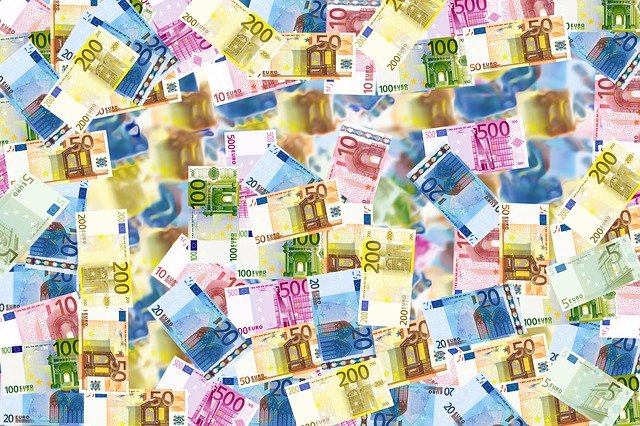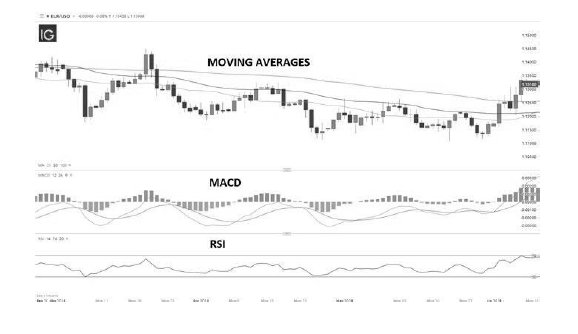|
Investment - Financial Terminology
Typically, the phrase "saver" refers to someone who has saved money and frequently invests it. When savers invest their money, they are known as investors and turn into capital providers. Investors are frequently referred to as lenders if their investment is a loan, which is money that is anticipated to be repaid with interest. Similar to how "spender" describes someone who needs money. Spenders turn into capital users once they have gotten the funds they require and have begun to put them to use. They are sometimes referred to as borrowers if they are loan beneficiaries. It should be noted that the phrases savers, investors, lenders, providers of capital, or spenders, borrowers, and users of capital are sometimes used synonymously.
0 Comments
Investment - Introduction
Have you ever questioned the purpose of the workings of the financial services sector? When the sector is functioning optimally, it effectively connects people with funds to invest with people who need money, lowering costs for both parties and facilitating financial assistance for the most successful firms and initiatives. Financial Service System The financial system connects those who can save money with those who can spend it. The financial services sector of the economy provides goods and services to both savers and spenders inside the financial system, as well as acting as a financial conduit. Individuals, families, businesses, and governments that have money to invest are referred to as savers. Spenders can be people, businesses, or governments. For instance, people take out loans to cover housing costs, educational costs, and other costs. Businesses take out loans to purchase equipment, real estate, and structures. Governments borrow when their tax revenues fall short of their budgeted expenditures. A division of the financial services sector is the investing industry. It has participants who assist investors in saving money as well as participants who assist spenders in raising capital on financial markets. SPM - Pengenalan Kepada Ekonomi - Sistem Ekonomi Islam
Diamalkan di negara Arab Saudi. Tunjang asas kepada ekonomi Islam adalah bagi memastikan pihak kerajaan, pihak swasta memastikan aktiviti ekonomi dijalankan denngan adil, saksama, lancar dan produktif. Kepentingan awam merupakan pekara yang penting dan dengan ini kerajaan akan menghasilkan barangan awam untuk tujuan kebajikan. Selain itu individu yang cukup syarat dikehendaki membayar zakat. Kerajaan akan mengawal kebebasan pengguna dan pengeluar melalui undang – undang Islam. Persaingan yang sihat adalah digalakkan. Milikan kekayaan oleh pihak swasta dan individu tidak dihalang melainkan ia bertentangan dengan hukum Islam. Sistem Ekonomi Islam adalah ekonomi campuran yang berlandaskan Al Quran dan Syariat Islam di mana segala aktiviti dan keputusan ekonomi adalah berlandaskan syariat Islam. Tujuan utama ekonomi Islam adalah untuk mencapai Al Falah. Segala aktiviti haruslah berlandaskan syariat Islam. Ekonomi Islam adalah sebahagian daripada kesuluruhan sistem hidup Islam. Adalah diharamkan untuk menjalani aktiviti seperti perjudian,pengambilan riba, dan penipuan. SPM - Pengenalan Kepada Ekonomi - Sistem Ekonomi Campuran
Malaysia merupakan negara di mana sistem ekonomi campuran diperkenalkan. Dalam Sistem Ekonomi Campuran, kerajaan hanya akan campur tangan apabila berlakunya penyelewengan serta ketidakdilan dalam sebarang bentuk aktiviti ekonomi. Kerajaan akan campur tangan dengan mengawal harga barang dan perkhidmatan, merapatkan jurang pendapatan rakyat, menyediakan barangan awam, melaksanakan program ekonomi awam dengan matlamata untuk menstabilkan ekonomi. Walau bagaimanapun, pengeluar dan pengguna masih bebas dalam memilih factor pengeluaran jika tiada sebarang unsur ketidakadilan ekonomi dalam penghasilan barang atau penyediaan perkhidmatan. Kerajaan akan mengambil bahagian dalam sektor ekonomi dengan memaksimumkan kebajikan rakyat dengan menyediakan barangan atau perkhidmatan awam. Keputusan ekonomi berada pada pengguna dan pengeluar dalam menyelesaikan masalah asas ekonomi. Pengeluar dapat bersaing bagi memilih dan memastikan penghasilan barang atau perkhidmatan yang dapat meminimumkan kos pengeluaran dan memaksimumkan keuntungan. Pengguna bebas memilih pengeluaran barang dan perkhidmatan. Selain bebas memilih teknik serta kaedah pengeluaran yang cekap dan efektif dalam memberi perkhidmatan atau menghasilkan barang secara berintensifkan buruh atau modal. Pengguna bebas menentukan dan memilih jenis barangan atau perkhidmatan yang diperlukan bagi memaksimumkan kepuasan. Walau bagaimanapun, kebebasan pengeluar dan pengguna ini dikawal oleh kerajaan berlandaskan undang – undang dan peraturan. Penyelesaian Masalah Ekonomi Bagi Sistem Ekonomi Campuran Apa yang hendak dikeluarkan? Ia bergantung kepada gabungan kuasa pihak kerajaan dan mekanisme pasaran. Pihak kerajaan akan menyediakan barangan atau perkhidmatan dengan harapan dapat menjamin kebajikan rakyat.(barangan awam) Pihak pengguna bebas menentukan dan memilih barang dan perkhidmatan dengan harapan memaksimumkan kepuasan pengguna.( barangan ekonomi) Pihak pengeluar bebas dalam memilih barangan atau perkhidmatan yang ingin diberi dengan harapan dapat meminimukan kos serta memaksimumkan keuntungan (barangan ekonomi) Bagaimana hendak dikeluarkan? Pihak kerajaan akan memilih teknik pengeluaran barangan awam dengan harapan agara kebajikan rakyat dapat dijaga. Pihak pengeluar akan memlih teknik pengeluaran yang efektif agar dapat memaksimumkan keuntungan dan meminimumkan kos pengeluaran bagi barangan ekonomi. Berapa yang hendak dikeluarkan? Kerajaan akan menentukan jumlah barangan awam yang hendak dikeluarkan bersandarkan keperluan rakyat. Pengeluaran barangan ekonomi ditentukan melalui mekanisme pasaran di mana wujudnya interaksi antara permintaan dan penawaran di pasaran. Untuk Siapa Dikeluarkan? Berdasarakn corak agihan pendapatan wang bagi barangan ekonomi. Golongan berpendapatan tinggi mempunyai kuasa beli yang lebih tinggi dan sebaliknya bagi mereka yang berpendapatan rendah. Pihak kerajaan akan memperkenalkan subsidi atau cukai dalam agihan barangan ekonomi. Bagi barangan awam yang ditentukan oleh pihak kerajaan. Barangan ini akan diagihkan berasaskan kehendak masyarakat secara adil dan saksama. Technical Analysis - Why Technical Analysis Is Beneficial to Traders
Technical analysis has become popular among dealers as a useful tool for managing risk, which can be a major barrier. Technical analysis is a flexible rational tool once a trader understands its principles and uses it on a variety of markets. Technical analysis seeks to identify patterns that can be usefully produced by the essentials, while key analysis seeks to identify characteristic value in a market. The following list of benefits of using technical analysis includes: can be used at any time and on any market. Technical analysis is a method that can be used on its own. helps traders identify trends they are looking for. Technical Analysis - Knowledge of Technical Analysis
Technical analysis involves comprehending chart instances. To discern trading opportunities based on fundamental examples on the lookout, traders use crucial information, including price and volume. Indicators of all kinds are applied to charts to determine sections and leave emphases for traders to increase a trade's potential at high risk/reward ratios. An example of a diagram using the MACD and RSI indicators is shown in the image below. Technical analysis traders maintain past patterns that can aid in anticipating future price movements, even though investors in technical analysis acknowledge that financial factors are the primary drivers of market movements. Understanding the differences between principal and technical analysis—and how to combine them—can be very useful, even though these exchanging styles are subject to change. Technical Analysis – What is Technical Analysis?
In part because of advancements in charting bundles and trading platforms, technical analysis is becoming an increasingly popular approach to trading. In any case, it can be overwhelming and challenging for a novice trader to comprehend technical analysis and how it helps to spot emerging trends. Technical analysis examines how a market's price changes, and traders use eye-catching chart patterns and signs to forecast emerging trends. It is a graphic depiction of a market's execution over time. Before placing a trade, it enables the trader to use this data as price activity, indicators, and examples to guide and teach future patterns. Technical Analysis - Technical Analysis vs Fundamental Analysis
While fundamental analysis and technical analysis share some similarities, they vary in methodology. Understanding both of these components of market analysis is crucial. Charts, market indicators, and other instruments are used by technical analysts to forecast future price movements. They examine historical patterns of supply and demand as well as the volume of transaction for a specific stock or index. Fundamental analysts, on the other hand, concentrate their attention on the company's finances and economic information about the sectors (also known as markets) for which the stocks trade. They are worried about things like company earnings announcements, profit margins, unemployment rates, and GDP growth rates. They look at these economic variables to see how they will impact the supply and demand for a specific commodity. Technical analysis focuses more on a stock's or index's price changes by looking at previous trading activity records. A technical analyst uses historical data to forecast future market trajectories. They think that prior performance is the best predictor of future outcomes and that history tends to repeat itself in the stock market. The main distinction between these 2 strategies is who is in charge, whether on a basic or technical level. Technical analysis looks at aspects that a business has no direct control over. For instance, whether or not people are optimistic about a company's future has a constant impact on stock prices. A stock's price will usually increase if many people are purchasing it. People are upbeat about that company because they believe it has room to grow in the future. Sadly, the features of fundamental analysis do not directly influence how keenly people are interested in purchasing a company or how high they may set their hopes for future development. Fundamental analysts look to earnings reports and other information published by businesses that give some indication of how well or badly they are performing in order to provide this kind of insight into its performance. The fundamental analyst examines the performance of the business as a whole and attempts to gain a general understanding of how the market responds to these reports. On the other hand, a technical expert is more focused on the stock's historical performance and charts this information to forecast its future movement. This research makes use of a wide range of instruments and charts, including bar, line, and candlestick diagrams. By drawing trend lines through notable highs or lows in price moves on a chart, traders can determine the strength or weakness of support or resistance levels, for example. Trend lines are used to pinpoint the best market entry and exit spots. Although the real charting tools used vary from one technical analysis tool to another, each one offers a different perspective on the past. Investors can use technical analysis to help them determine whether a potential purchase is worthwhile. The previous performance of a stock can be used to predict its future value. Investors may have cause to think that the price will move back up towards $20 per share rather than breaking through the support level, for instance, if a stock has historically closed at $20 per share and it drops to $15 per share. Islamic Finance – Islamic Capital Market - Sukuk that is tradable and interchangeable
More value-added elements are needed in the Sukuk structure as investors become more sophisticated. One feature is the exchangeability or convertibility of the Sukuk into shares of certain businesses. They now have the chance to change their Sukuk into shares as a result. A straight bond or security issuance that also grants the investor the option to convert or exchange the bond or security into a predetermined number of shares of a company at a predetermined exchange price is known as an exchangeable security. This choice is available for both convertible and exchangeable securities, but the shares that can be converted into or exchanged for them vary. While holders of exchangeable securities can convert their securities into ordinary shares of other businesses, holders of convertible securities have the right to convert their securities into ordinary shares of the issuer company. The conversion price, which is set at the time the securities are issued and is dependent on the par value of the bond, is crucial in this Sukuk structure. The conversion ratio, which determines whether the security will be converted or exchanged into common shares of the relevant businesses, is calculated by dividing the par value of the securities by the share price. Let's say a convertible or exchangeable asset has a $1,000 par value. A share's exchange cost has been set at $250. It is possible to calculate the conversion ratio by using two fixed variables: 1,000/250 = (4:1). This formula shows how each security with a $1,000 par value can be changed or traded for four common shares. It should be emphasised that regardless of the market value of the securities at the moment of conversion or exchange, the conversion ratio must be based on the par value of the securities. The holders of securities will undoubtedly profit from this development. If the Sukuk holder chooses to convert or exchange their Sukuk, they will become shareholders of a company with all the corresponding rights and liabilities. Additionally, they will be qualified to receive dividends and/or financial gains, as applicable. Since the market will ultimately decide on the dividend or capital gain, there is no cap on either because it will be determined by the market. Holders will continue to receive the fixed income or the anticipated periodic profit distribution if they do not convert or trade their Sukuk. Additionally, they have the right to the principal redemption during the maturity time. They also have precedence over regular shareholders of the issuing company in the event of liquidation because they are Sukuk investors. Islamic Finance – Islamic Capital Market - Arguments against the Sukuk's Capital Guarantee Clause3/7/2023 Islamic Finance – Islamic Capital Market - Arguments against the Sukuk's Capital Guarantee Clause
This has been equated by opponents of a capital guarantee provision with a capital guarantee, which they believe should be avoided. They contend that even in cases where the issuer has failed to produce sufficient income, a purchase undertaking based on Wa'd will secure or guarantee the capital or investment principal. In actuality, this will absolve Sukuk investors of the danger of capital loss. They contend that the capital has been guaranteed under all conditions by the formula for the exercise price of the purchase commitment in these Sukuks. It has been hotly debated among Middle Eastern academics whether the manager (of Mudarabah), the partner (in Musharakah), or an agent should be the one to issue a purchase undertaking promising to buy the Sukuk assets for a price equal to the Sukuk's face value. Many Shari'ah principles, including the pertinent Shari'ah standards of AAOIFI, have been cited by scholars who oppose this practise. These principles essentially forbid or disallow any kind of capital assurance. While supporting the ban on capital guarantees, academics who have endorsed this practise have argued that this purchase endeavour won't necessarily result in a capital guarantee like in the case of a conventional bond. A point that makes an Islamic Sukuk different from the conventional bond, though it includes a purchase undertaking provision, is that the undertaking is to purchase the assets of the business venture. The capital redemption is not an endeavour. Therefore, the Sukuk owners would be responsible for paying any losses if the venture's assets were damaged or completely lost. This characteristic sets it apart from a typical bond and represents the loss sharing idea. In a traditional structure, the investment's capital is always required to be repaid. It is therefore feasible to have a redemption clause or put option price that protects the investment's principal thanks to the Ijtihad and the supporting scholars' viewpoints. |
AuthorAnything you need to know about finance, money and business Archives
May 2023
Categories
All
|




 RSS Feed
RSS Feed